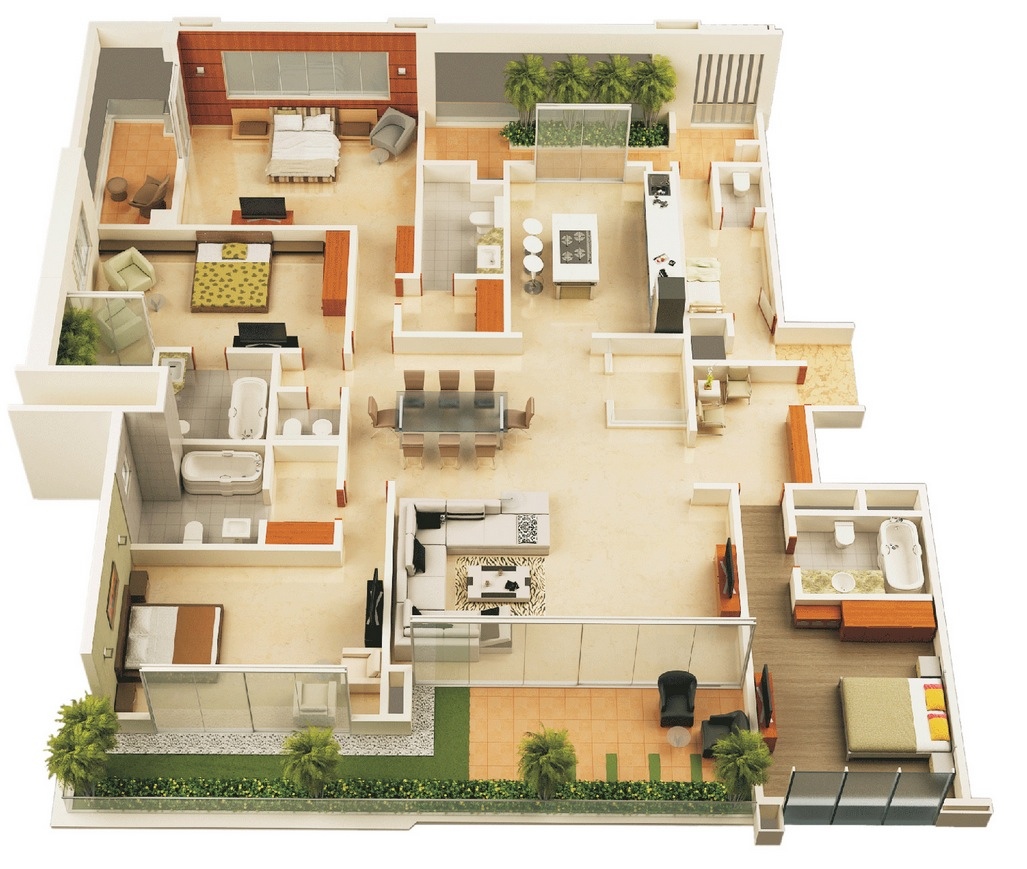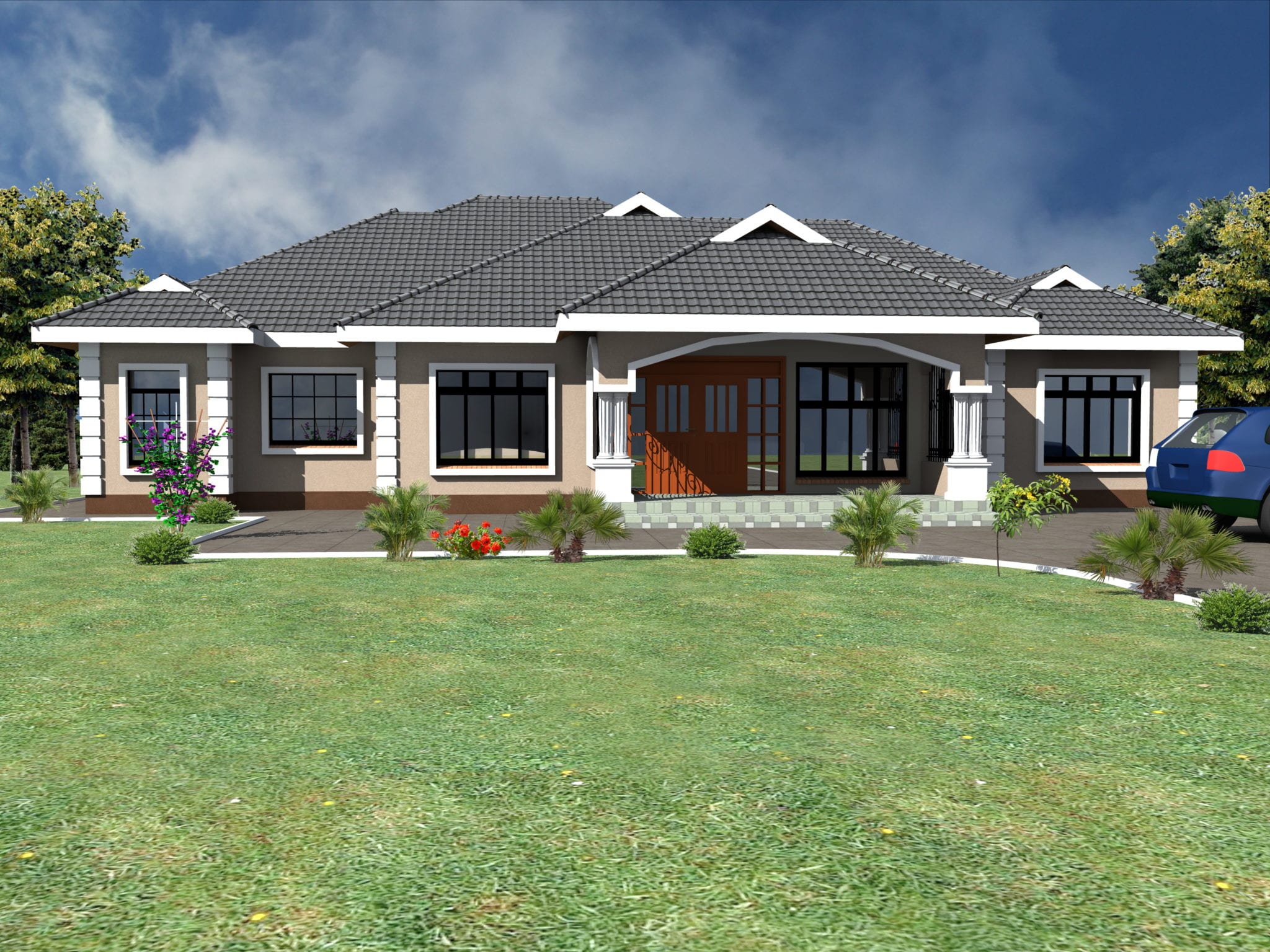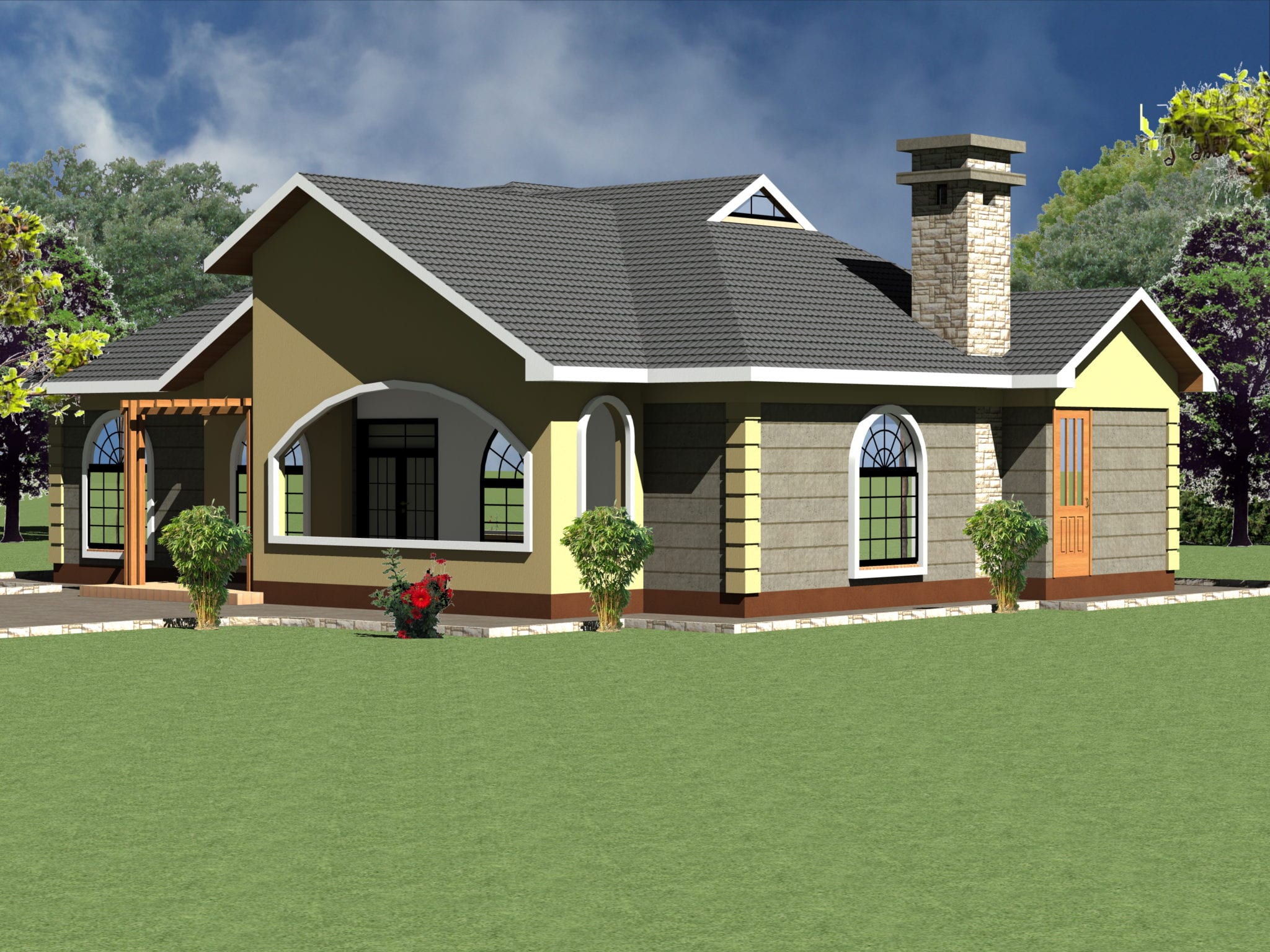Understanding the Challenge: 4 Bedroom Small House Design

Designing a functional and comfortable 4-bedroom small house presents a unique set of challenges. The limited square footage necessitates careful planning and innovative design solutions to ensure each room serves its purpose efficiently while maintaining a sense of spaciousness.
Maximizing Space Utilization
To accommodate four bedrooms comfortably within a small footprint, maximizing space utilization is paramount. This involves strategic planning to ensure every square inch is used effectively.
- Open Floor Plans: Open floor plans can create a sense of spaciousness by eliminating unnecessary walls and maximizing natural light flow. This can be achieved by combining living, dining, and kitchen areas into a single, open space, fostering a sense of openness and connection.
- Multi-Functional Rooms: Multi-functional rooms are essential for small homes. For instance, a home office can double as a guest room with a pull-out sofa bed, or a living room can incorporate a built-in desk for work or study. This approach optimizes space while providing flexibility for different activities.
- Built-in Furniture: Built-in furniture offers a significant advantage in small spaces by maximizing storage and minimizing clutter. Custom-designed cabinets, shelves, and benches can seamlessly integrate with the room’s design, providing ample storage while maintaining a streamlined aesthetic.
- Vertical Storage Solutions: Vertical storage solutions are ideal for maximizing space in small homes. Tall bookshelves, cabinets, and wall-mounted organizers can effectively utilize vertical space, minimizing floor clutter and maximizing storage capacity.
Optimizing Layout and Flow

In a small house, maximizing space and ensuring a comfortable flow are crucial. This section delves into the strategies for creating an efficient floor plan that accommodates four bedrooms while maintaining a harmonious living experience.
Optimizing Space Allocation
An effective floor plan prioritizes space allocation to maximize functionality and comfort. In a four-bedroom small house, careful consideration must be given to the size and placement of bedrooms, shared spaces, and circulation areas.
- Bedroom Placement: Bedrooms should be strategically positioned to ensure privacy and minimize noise interference. Smaller bedrooms can be placed near shared spaces, while larger bedrooms may be located in quieter areas. Consider using a “cluster” approach where two smaller bedrooms share a common wall, creating a more efficient use of space.
- Shared Spaces: Shared spaces, such as the living room, kitchen, and dining area, should be designed to be open and inviting. Consider using a “multi-functional” approach where a single space can serve multiple purposes, such as a living room that doubles as a home office or a dining area that can be converted into a guest room.
- Circulation Areas: Hallways and corridors should be designed to allow for easy movement throughout the house. Avoid narrow or cramped hallways, as this can create a feeling of claustrophobia. Consider using a “U-shaped” or “L-shaped” layout to maximize space and create a more open feel.
Visualizing the Floor Plan
A visual representation of the floor plan is essential for understanding the spatial relationships within the house. This can be achieved through a floor plan drawing that highlights key features such as:
- Bedroom Placement: The drawing should clearly indicate the size and location of each bedroom, including any built-in features like closets or wardrobes.
- Shared Spaces: The drawing should illustrate the layout of shared spaces, such as the living room, kitchen, and dining area, highlighting their connection to other areas of the house.
- Traffic Flow: The drawing should depict the flow of movement throughout the house, including doorways, hallways, and stairs. This will help to identify potential bottlenecks and areas where the flow can be improved.
The Importance of Natural Light and Ventilation, 4 bedroom small house design
Natural light and ventilation are crucial for creating a healthy and comfortable living environment, especially in small houses. Adequate natural light brightens the interior, reduces reliance on artificial lighting, and improves mood. Ventilation ensures fresh air circulation, reducing humidity and eliminating stale air.
- Window Placement: Strategically placed windows can maximize natural light penetration and ventilation. Consider using large windows in living areas and smaller windows in bedrooms. Place windows on opposite sides of the house to create cross-ventilation.
- Skylights: Skylights can be a great way to introduce natural light into areas that are not directly exposed to sunlight. However, ensure proper insulation to prevent heat loss in colder climates.
- Ventilation Systems: Incorporate ventilation systems, such as fans or exhaust vents, to ensure adequate air circulation. This is especially important in bathrooms and kitchens, where moisture and odors can accumulate.
Style and Aesthetics

A small 4-bedroom house presents a unique challenge in terms of style and aesthetics. The goal is to create a space that feels both spacious and inviting, despite the limited square footage. This can be achieved through thoughtful selection of architectural styles, color palettes, materials, and furniture placement.
Architectural Styles
Choosing the right architectural style can significantly impact the overall feel of your small 4-bedroom home. Here are a few popular styles that are well-suited for smaller spaces:
- Modern: Modern homes are characterized by clean lines, open floor plans, and a minimalist aesthetic. This style is particularly well-suited for smaller homes as it emphasizes functionality and maximizes space. Examples of modern design elements include large windows, sleek fixtures, and a neutral color palette.
- Farmhouse: Farmhouse style homes evoke a sense of warmth and comfort. They typically feature rustic materials like wood and stone, along with a neutral color palette accented with pops of color. The use of natural light and open floor plans can help create a spacious feel, even in a smaller home.
- Cottage: Cottage style homes are charming and cozy, often featuring quaint details like gables, dormers, and stone accents. This style can be particularly effective in smaller homes as it emphasizes intimacy and creates a sense of warmth. Cottage style homes often use a soft color palette, with natural materials like wood and stone playing a prominent role.
Color Palettes
The right color palette can make a small 4-bedroom home feel more spacious and inviting. Here are some general guidelines:
- Light Colors: Light colors, such as white, cream, and light gray, reflect light and create a sense of spaciousness. These colors are ideal for walls, ceilings, and trim.
- Accent Colors: Use accent colors strategically to add pops of personality and visual interest. Consider using bold colors in furniture, artwork, or throw pillows.
- Natural Colors: Incorporating natural colors, such as greens, blues, and browns, can create a calming and inviting atmosphere. These colors can be used in furniture, rugs, or artwork.
Materials and Finishes
Materials and finishes play a crucial role in creating a cohesive and inviting atmosphere. Here are some ideas for a small 4-bedroom home:
- Natural Materials: Natural materials like wood, stone, and brick add warmth and texture to a space. Consider using wood floors, stone countertops, or a brick fireplace.
- Light-Reflecting Surfaces: Use light-reflecting surfaces, such as glossy paint or polished metal, to create a sense of spaciousness. These surfaces can be incorporated into furniture, lighting fixtures, or hardware.
- Simple Finishes: Simple finishes, such as plain molding or uncluttered cabinetry, can help create a clean and minimalist aesthetic.
Maximizing Visual Space
Even a small 4-bedroom home can feel spacious with the right design strategies. Here are some ideas for maximizing visual space:
- Mirrors: Mirrors reflect light and create the illusion of more space. Strategically placed mirrors can make a room feel larger and brighter.
- Light Colors: As mentioned earlier, light colors reflect light and create a sense of spaciousness. Use light colors on walls, ceilings, and trim to maximize visual space.
- Strategic Furniture Placement: Avoid placing furniture against walls, which can make a room feel smaller. Instead, use furniture to define areas within a space and create a sense of flow.